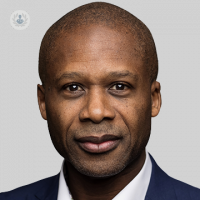How serious is a blocked tear duct?
Written in association with:Blocked tear ducts in children is the medical topic in the spotlight in one of our latest articles here below, as revered consultant ophthalmologist, Dr Danny Morrison, provides us with a comprehensive guide.

How serious is a blocked tear duct? Is treatment always necessary?
Blocked tear ducts are very common, and they are not usually very serious. In fact, blocked tear ducts can affect up to five per cent of children within the first few months of life. Symptoms include a sticky eye, and mucus and discharge in the inside corner of the eye, particularly in the mornings.
There is very rarely any eyelid swelling. One of the key signs that we look for is redness in the eye, as redness of the eye points towards other more serious eye conditions, such as conjunctivitis.
When might surgery be necessary?
Surgery would initially be required for persistent symptoms in a child who has reached the age of 10 or 11 months. Between 10 to 11 months and up to two years of age, a probing of the tear duct with a nasal examination would be the procedure of choice.
At the same time as doing this first procedure, I will sometimes insert a stent (a soft tube) which can go into the tear duct and hold it open. A stent can normally be removed in the outpatient clinic after one to two months after surgery, although in some children, they do have to return to have the stent removed with the help of an anaesthetic.
In less than one per cent of children, this initial operation is not effective nor successful. In these rare cases, a formal drainage operation at the age of four or five onwards is performed. This involves a one to two-hour general anaesthetic, and an incision is made through the skin of the nose bridge to access the tear duct by removing some bone.
Then, the tear duct will be joined artificially to the inside of the nose, thereby diverting the tears so that they flow freely from the surface of the eye. The recovery period is about one week off before returning to school.
Is tear duct surgery a painful procedure?
The tear duct probing surgery is not a very painful procedure. No bone is removed in this procedure, so there might be a bit of blood and mucus coming from the nose afterwards. A simple painkiller such as Calpol might be required for a short time after.
What is the recovery period like?
Recovery from blocked tear duct surgery is very quick, and children are usually back to themselves after 72 hours following the operation. They might have to out some eye drops in for about a week after surgery just to settle down the inflammation and to prevent infection.
Recovery from a formal drainage will take a little longer, with children needing around a week to fully recover. The majority of the pain will be felt within the first 24 hours.
If you’d like to book an appointment with Mr Danny Morrison, you can do so by visiting his Top Doctors profile today.


